Generating non-stationary Gaussian random fields on hypersurfaces using surface finite element methods
Erik Jansson
Slides available at slides.com/erikjansson

Stochastic partial differential equations: Statistics meets numerics
IML 2025
Hi!
What stochastics + numerics do I work with?
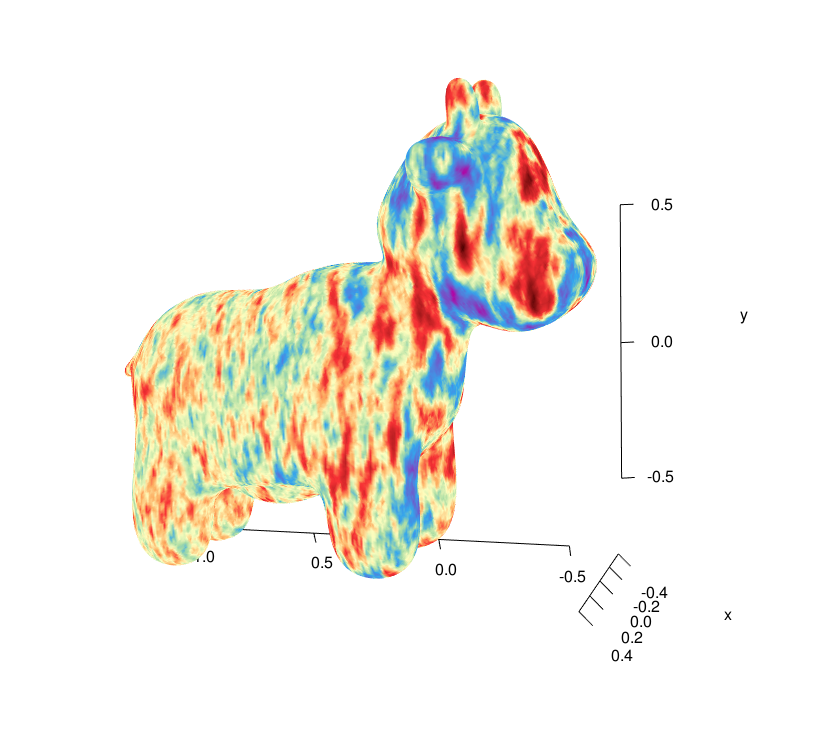
Random fields via SPDEs/PDE-based colorings
Stochastic LP systems

Time but no space
Space but no time
Joint work with:
- Annika Lang (Chalmers/University of Gothenburg)
- Mike Pereira (Mines Paris - PSL University)
Made possible by:
-
A. Bonito, D. Guignard, and W. Lei, Numerical approximation of Gaussian random fields on
closed surfaces, Computational and Applied Mathematics. In press (2024) -
Dziuk, G., and Elliott, C. M., Finite element methods for surface PDEs. Acta Num., 22:289–396, 2013.
-
H. Fujita and T. Suzuki, Evolution problems, Handbook of Numerical Analysis, pp. 789–928,
-
Whittle, P., Stochastic processes in several dimensions. Bull. Inst. Int. Stat., 40:974–994, 1963.

Talk based on:
asdasdasd
https://arxiv.org//2406.08185
See Audience for Annika
Mike
-
D. Boffi, Finite element approximation of eigenvalue problems, Acta Numerica, pp. 1-120 (2010).
-
A. Yagi, Abstract Parabolic Evolution Equations and Their Applications, Springer Monographs in Mathematics, Springer, Berlin, 2010.
-
Bolin, D., Kirchner, K., Kovács, M., Numerical solution of fractional elliptic stochastic PDEs with spatial white noise, IMA J. Numer. Anal., 40(2):1051–1073, 2020
Bonus references
GRFs on Manifolds
In this talk: Manifolds = compact, boundary–less oriented embedded surfaces or curves in \(\mathbb{R}^3\) or \(\mathbb{R}^2\)

Two questions:
Sampling
Statistics
Elliptic differential operator
White noise
SPDE view: Consider GRFs that are colorings of white noise by functions of elliptic partial differential operators:
Elliptic differential operator
White noise
Two questions:
Sampling
Statistics

GRFs on Manifolds
In this talk: Manifolds = compact, boundary–less oriented embedded surfaces or curves in \(\mathbb{R}^3\) or \(\mathbb{R}^2\)
SPDE view: Consider GRFs that are colorings of white noise by functions of elliptic partial differential operators:
Two questions:
Computation
Statistics

GRFs on Manifolds
In this talk: Manifolds = compact, boundary–less oriented embedded surfaces or curves in \(\mathbb{R}^3\) or \(\mathbb{R}^2\)
But please reach out re "stats"
Elliptic differential operator
White noise
SPDE view: Consider GRFs that are colorings of white noise by functions of elliptic partial differential operators:
The differential operator
Eigenpairs of \( \mathcal{L} \): \((\lambda_i,e_i)\)
+ Conditions
\(\mathsf A_\mathcal{M}\) defines elliptic operator \(\mathcal L\)
The Model
\(\gamma\colon\mathbb{R}_+ \to \mathbb{R}\) is a function satisfying sufficient decay properties (plus more)
The Model


The Model: Example 1
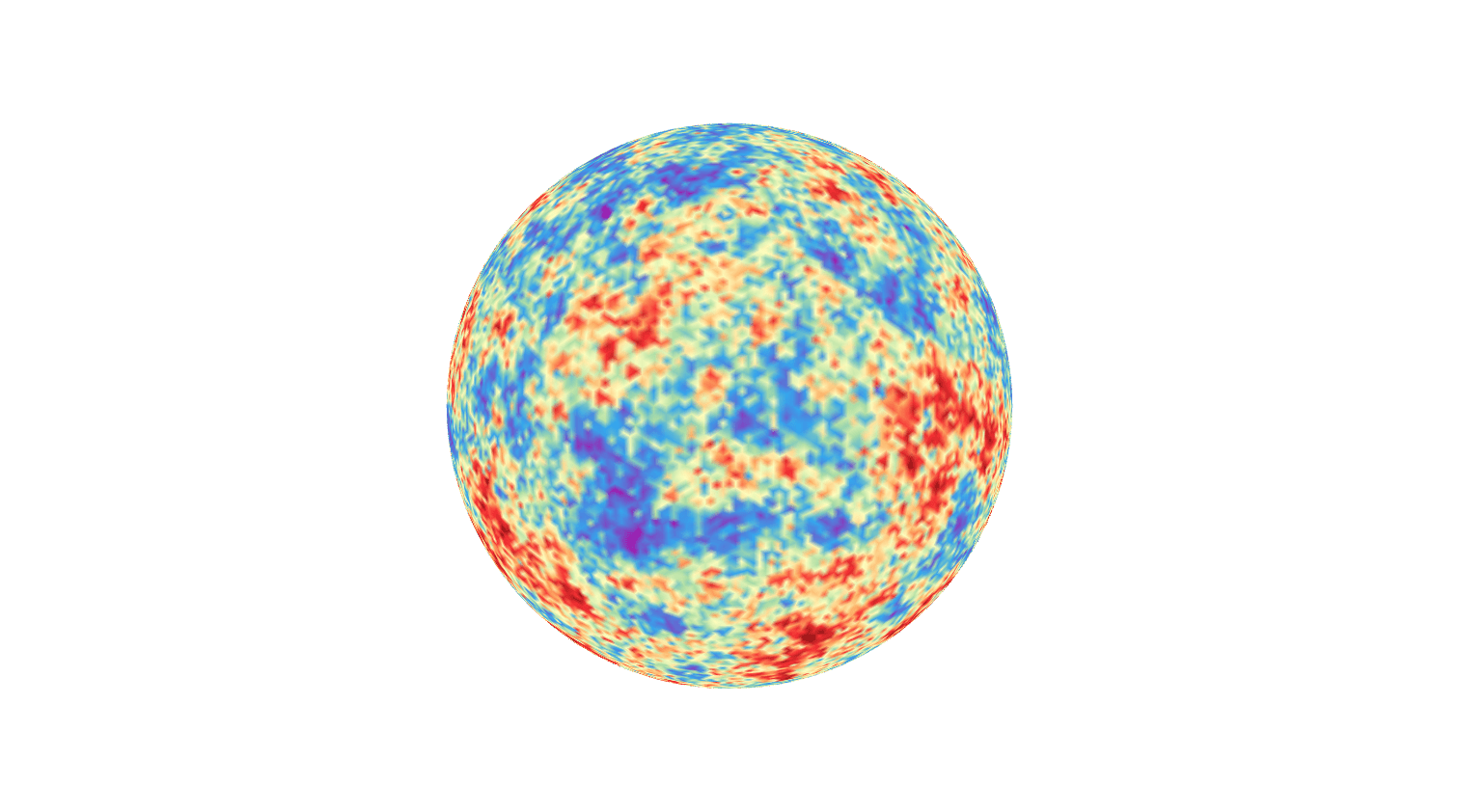
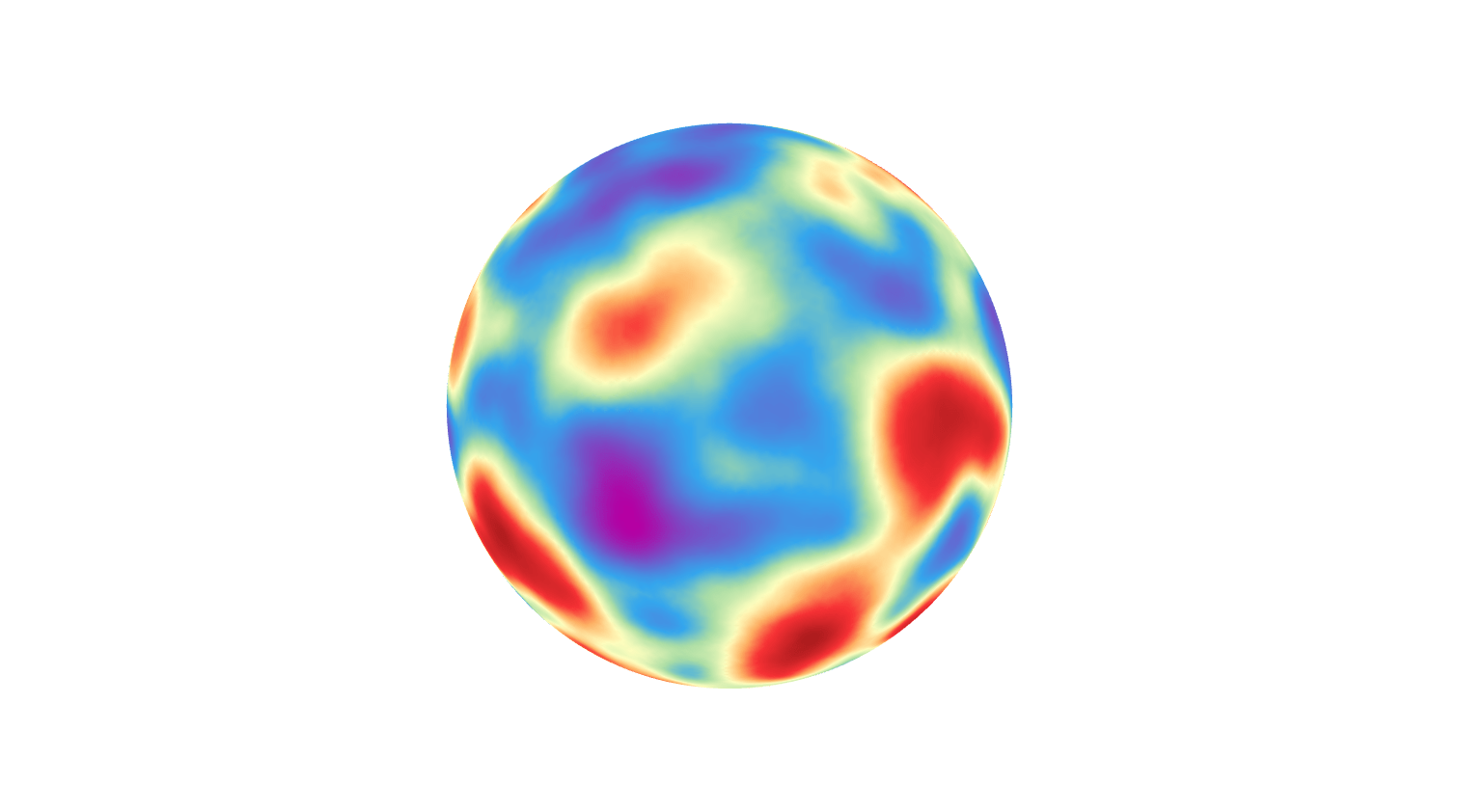
Whittle–Matérn random fields given by SPDE \((\kappa^2-\Delta_{\mathbb{S}^2})^\beta \mathcal Z = \mathcal{W}\)!
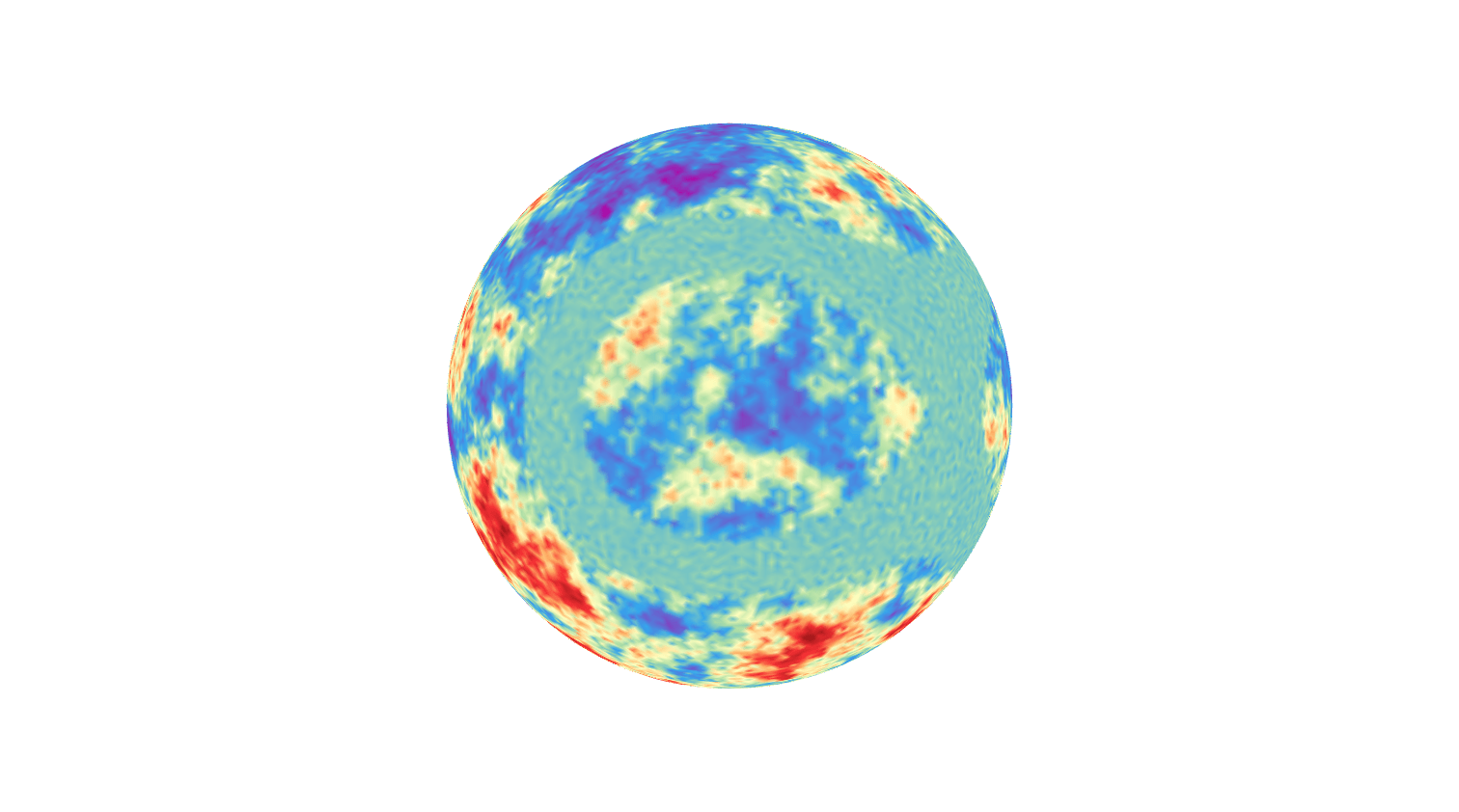
The Model: Example 2
\(\rho_1\) small, \(\rho_2\) large: field is elongated tangentially along level sets of \(f\)
\(\rho_1\) large, \(\rho_2\) small: field is elongated orthogonally along level sets of \(f\)
The Model: Example 3
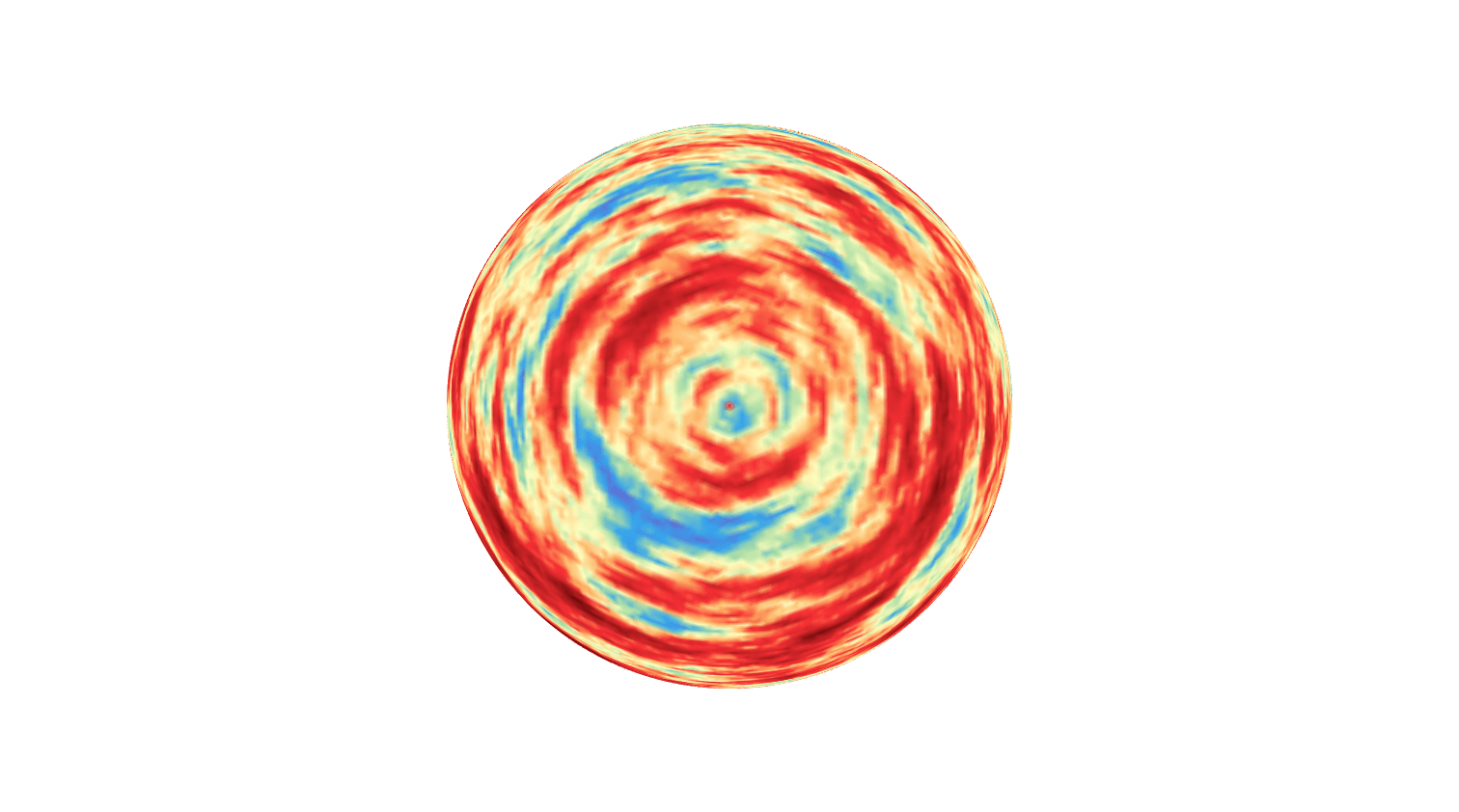
The Model: Example 3

The Model: Example


- "Preferred directions"
- "Local activations"
- "Local correlation length"
- Different regularity by \(\gamma\)
Non-spherical examples



5
Sampling the fields
Problem: \((\lambda_i,e_i)\) is not available!
Sampling \(\iff\) Evaluating \(\mathcal Z = \sum_{i=1}^\infty \gamma(\lambda_i) W_i e_i\)
Can \((\lambda_i,e_i)\) be approximated?
Maybe? Solving an SPDE, try with FEM!
Main computational tool: FEM
On Euclidean spaces
Just triangulate the domain!
Put the pieces back together, get the original domain!
Main computational tool: FEM
On manifolds!
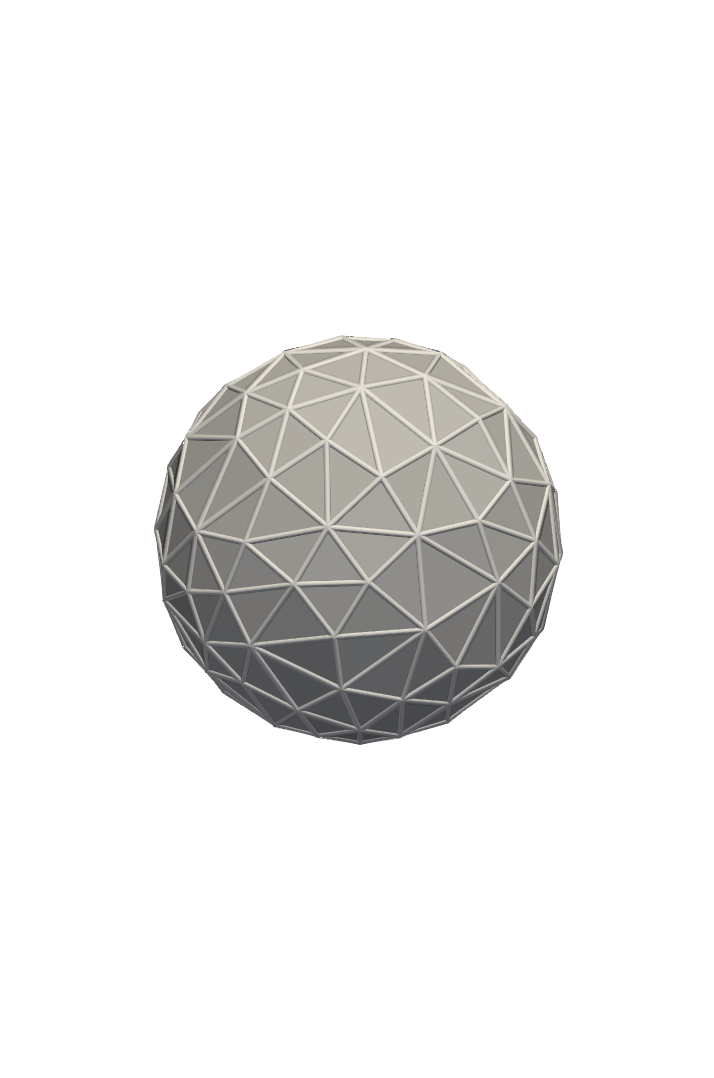
Step 1: Triangulate the domain

Issue: Approximate solutions live on \(\mathcal{M}_h\), not \(\mathcal{M}\)!
Put the pieces back together, don't get the same domain!
Step 2: FEM space \(S_h \subset H^1(\mathcal{M}_h)\) of p.w., continuous, linear functions
Given \(\eta: \mathcal{M}_h \to \mathbb{R}\), \(\eta^\ell= \eta \circ a\) is on \(\mathcal{M}\)!
Step 3: Key tool in surface finite elements: the lift
Takeway: FEM error similar to flat case, up to a "geometry error" term
Main computational tool: FEM
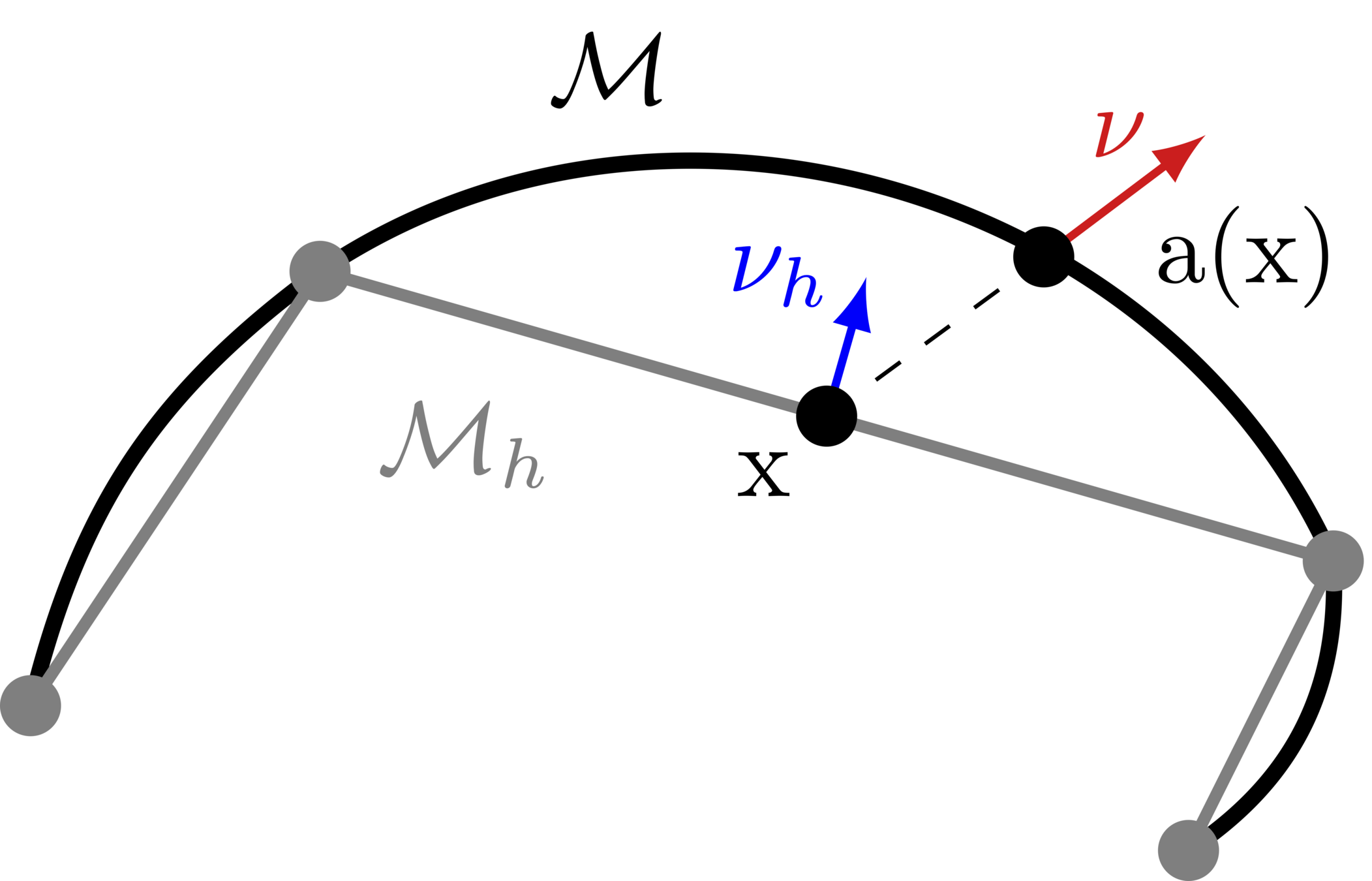
Main computational tool: FEM
Discretization of operators

Original

Eigenpairs
Discrete 1
Eigenpairs


Discrete 2
Eigenpairs

How to sample?

Use eigenpairs \((\Lambda_{i,h},E_{i,h})\) of \(\mathsf{L}_h\)
First idea: Use these to approximate


How to sample?
In practice:
Works with known mesh, "unknown" manifold:
Find a mesh and you can simulate GRFs on it!
What about strong error?
\((Z_i)\) are Gaussian with covariance matrix determined by \(\gamma\) and FEM matrices
How to sample, really?
Chebyshev quadrature approximation of \(\gamma\)
Error analysis: first try
First try:
Problem:
Generally: Approximating eigenfunctions are hard!
Eigenvalues are fine, however!
Problematic discrete eigenfunctions
Generally: Approximating eigenfunctions are hard! Multiplicity!


From D. Boffi, Acta Num. (2010)
Noise and Field Approximations
Various white noise approximations, various approximations of \(\mathcal Z\)
sd
sd
sd
Strong error roadmap
??
Important result: errors on the form
\(\|\gamma(\mathcal L)f -\gamma(\mathcal L_h) f\|_{L^2}\)
Brief note on proof:
Deterministic Error Result
Brief note on proof:

Deterministic Error Result
Strong error bound
In the end:
Mandatory error simulation plots

\(\alpha = 1.75\)
Mandatory error simulation plots


Mandatory error simulation plots
\(\alpha = 1.75\)

In conclusion...

- We can sample non-stationary random fields on curves and surfaces using mesh only
- We can prove that the strong error is bounded
- Time dependence: soon on a preprint server
- Inference: Discuss?